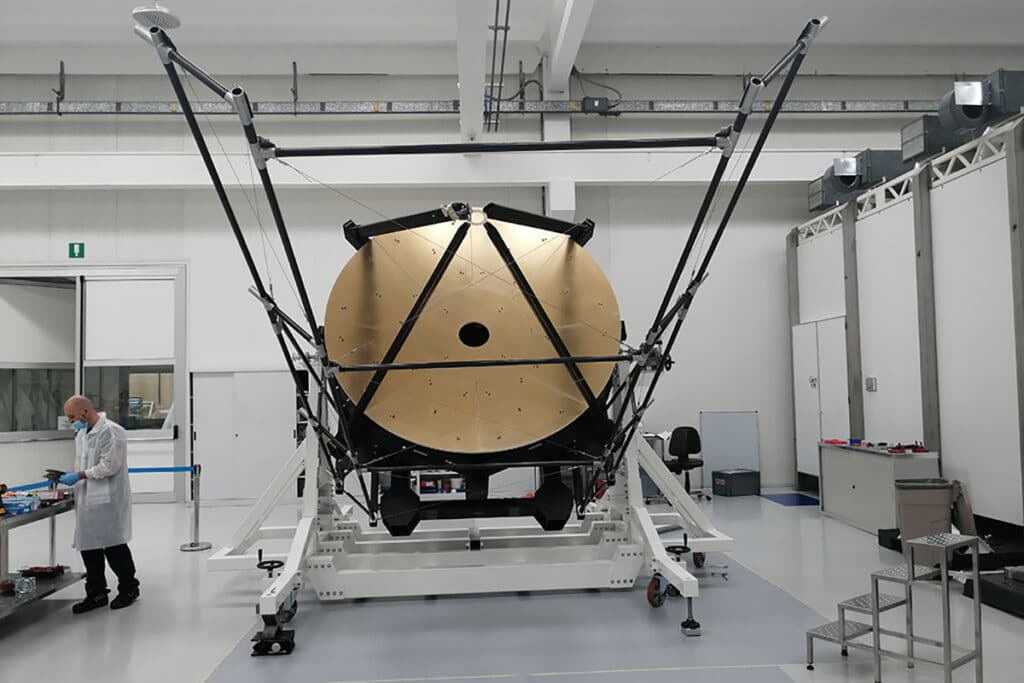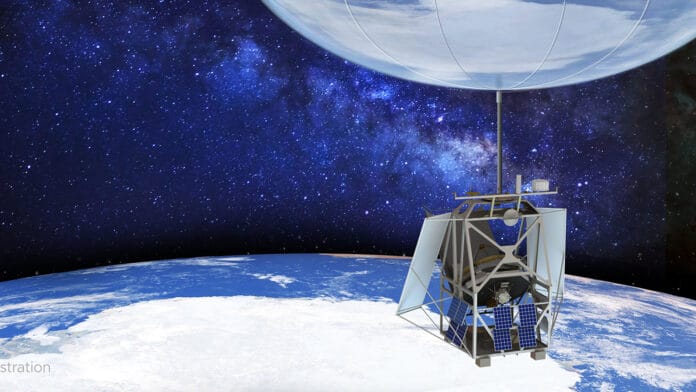As a part of its Scientific Balloon Program, NASA launches 10 to 15 balloon missions each year. In an upcoming mission, NASA plans to use a balloon larger than a football field to send a telescope 130,000 feet (about 40,000 meters) above Antarctica. From that height, the telescope will study a phenomenon that chokes off star formation in some galaxies, effectively killing them.
Called the Astrophysics Stratospheric Telescope for High Spectral Resolution Observations at Submillimetre-wavelengths, or ASTHROS, the mission will use a primary mirror – this telescope‘s main light-gathering tool – that’s tied for the largest ever to fly on a high-altitude balloon.
The 8.2-foot (2.5-meter) mirror and its support structure must be exceptionally light to travel by stratospheric balloon yet strong enough to keep the pull of Earth’s gravity from deforming its almost perfect parabolic shape by any more than about 0.0001 inches (2.5 micrometers) – a fraction of the width of a human hair.

ASTHROS is set to launch no earlier than December 2023, circling the South Pole for up to four weeks. High up in the stratosphere, ASTHROS will observe wavelengths of light that are blocked by Earth’s atmosphere in a range called far-infrared. Its large mirror will enhance the telescope’s ability to observe fainter light sources and resolve finer details of those sources. Those capabilities are essential to the mission’s approach to studying stellar feedback, the process by which clouds of gas and dust – the ingredients for making stars – are dispersed in galaxies, sometimes to the point that star formation halts entirely.
ASTHROS will look at several star-forming regions in our galaxy where these processes take place, creating high-resolution 3D maps of the distribution and motion of the gas. The mission will also look at distant galaxies containing millions of stars to see how feedback plays out at large scales and in different environments.
ASTHROS’ full telescope unit, including a primary mirror, secondary mirror, and supporting structure (called the cradle), was developed by Media Lario, an optics company in Italy. Its primary mirror features nine panels, which are significantly easier to fabricate than a one-piece mirror. The bulk of the mirror panels consists of lightweight aluminum, formed into a honeycomb structure that reduces its total mass. The panel surfaces are made of nickel and coated with gold, which improves the mirror’s reflectivity at far-infrared wavelengths.
“I think this is probably the most complex telescope ever built for a high-altitude balloon mission,” said Jose Siles, the ASTHROS project manager at JPL. “We had specifications similar to a space telescope but on a tighter budget, schedule, and mass. We had to combine techniques from ground-based telescopes that observe in similar wavelengths with advanced manufacturing techniques used for professional racing sailboats. It’s pretty unique.”
Media Lario will deliver the full telescope unit to NASA in late July. After that, the ASTHROS team will integrate it with the gondola (the structure that holds the entire payload and attaches to the balloon) and other key components. Then they’ll begin a series of tests to ensure everything is ready for flight.
